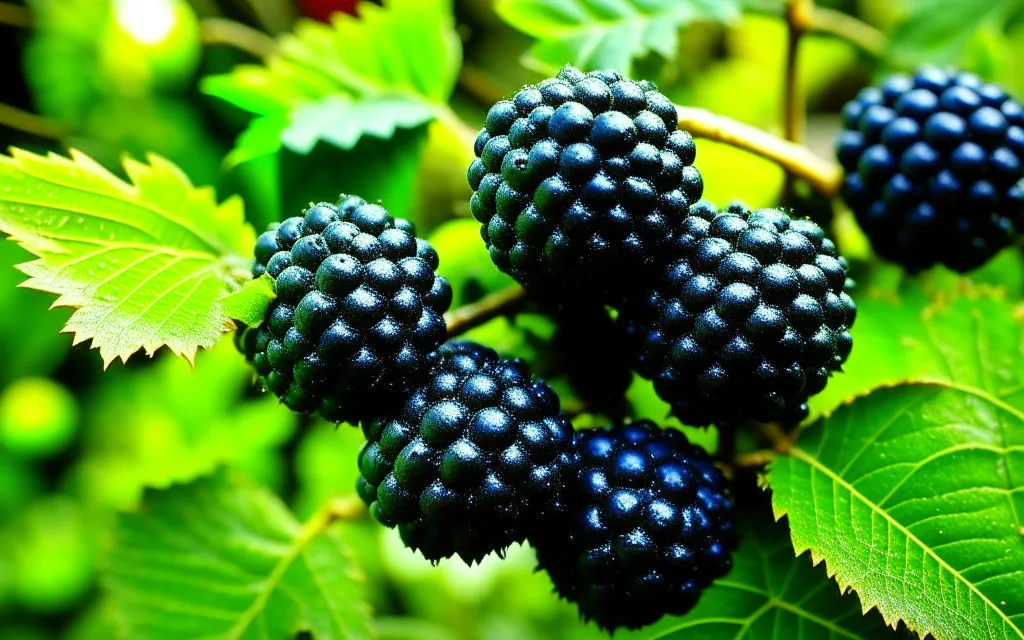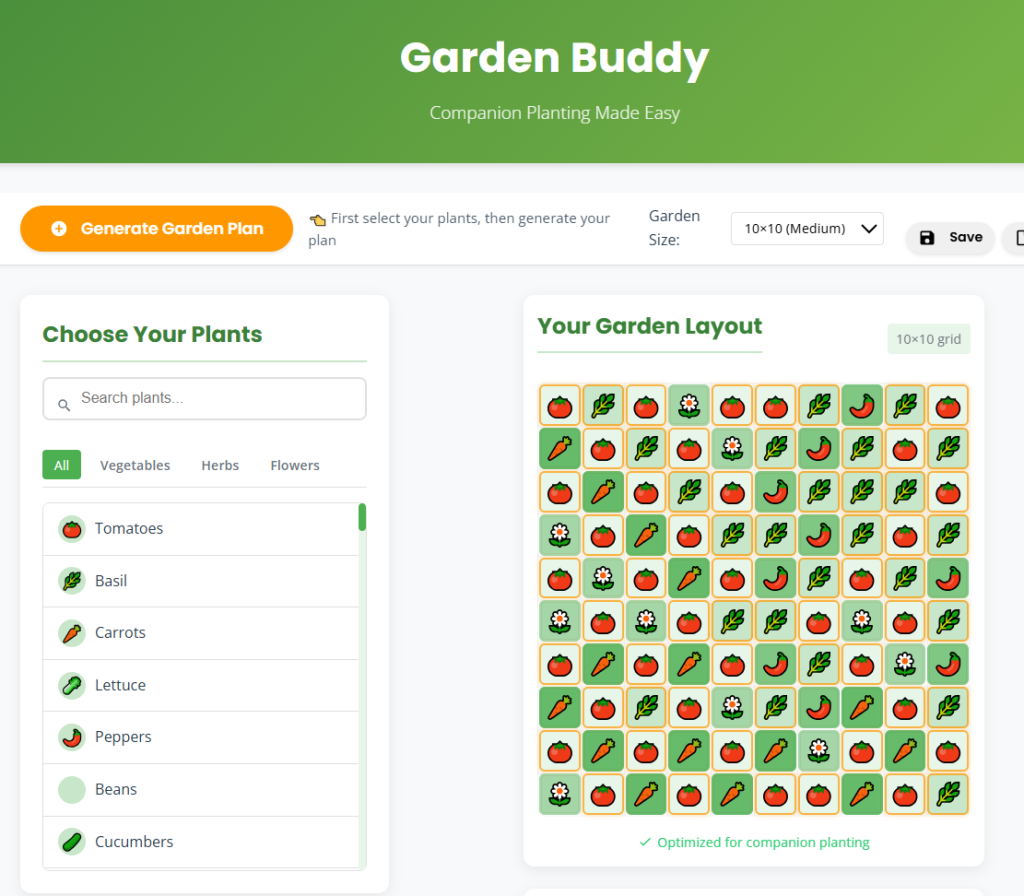
The Joy of Growing Blackberries: Your Guide to Companion Planting
Ah, blackberries! There’s nothing quite like the taste of these sweet, juicy fruits straight from the garden. They’ve got a rich history, too, dating back to ancient times when they were enjoyed for their flavor and medicinal properties. If you’re considering growing them, it’s essential to understand their basic growing requirements. Blackberries thrive in well-drained soil, prefer full sun, and love a good dose of organic matter. They’re pretty hardy, but like any plant, they benefit from some extra love and attention.
Now, before you start picturing a tangled mess of vines, let me share some exciting news. You can grow blackberries in a variety of ways! Whether you opt for traditional horizontal growth or get creative with vertical gardening, you’re in for a treat. Using trellises can really help manage the canes and make harvesting a breeze. Plus, there are different variants to choose from. Thornless varieties like ‘Navaho’ or sweet ones like ‘Black Satin’ offer delectable options tailored to your gardening style.
The Benefits of Companion Planting for Blackberries
So, you might be wondering: what’s the deal with companion planting? Well, it’s a smart strategy when it comes to enhancing the growing conditions of your blackberries. By planting them alongside certain friends, you can boost their growth, deter pests, and even improve flavor. It’s like hosting a block party where everyone brings their A-game!
Good Companion Plants for Blackberries
When it comes to companion planting for blackberries, two stars of the show are Tansy and Borage. Let me break it down for you:
Both plants add different benefits: Tansy for its pest control and Borage for soil health and pollinator attraction. If you’re going for a distinct advantage in growth and health, I’d say Borage has the edge with its nutrient-rich offerings.
Plants to Avoid
Interestingly, I’ve noticed there’s not an extensive list of plants to avoid with blackberries. However, keeping the area around your blackberries clear of overly aggressive plants will help minimize competition for nutrients and water. It’s a good rule of thumb to ensure that anything you plant nearby won’t overshadow or crowd your blackberries.
Final Thoughts
The beauty of growing blackberries lies not just in their delightful taste but in how you cultivate a thriving ecosystem around them. Keeping Tansy and Borage at least 2 feet away is a smart practice to ensure your blackberries flourish without any competitive issues. It’s all about finding balance in your garden!
So, are you ready to grow some delicious blackberries? Embrace companion planting, and you’ll be on your way to a bountiful harvest! Happy gardening!
Companion Planting with Blackberries: Spacing Guidelines and Recommendations
Planting companion plants can make a big difference in the health and yield of your blackberry crop. Not only do they help deter pests and encourage beneficial insects, but they also provide nutrients and shade. I’ve spent countless afternoons tinkering in my garden, so let’s dig into those spacing recommendations!
General Rule for Tansy and Borage
When planting Tansy and Borage near your blackberry bushes, aim for a spacing of about **2 to 3 feet**. Both plants are known for attracting pollinators, and Tansy, in particular, helps repel certain pests.
Guidelines for Tall Companions
Tall companions should be positioned to avoid shading your blackberries too much. A spacing of **3 to 4 feet** is often ideal. This category includes plants like **Sunflowers** and **Corn**, which can help attract beneficial insects but won’t compete for light. Just be sure to adjust based on your garden conditions; for instance, if your sunflowers grow particularly tall, they might cast more shade than anticipated.
Guidelines for Low-Growing Companions
Low-growing plants can be spaced **1 to 2 feet** away from your blackberries. Consider adding options like **Creeping Thyme** or **Oregano**. These ground-hugging delights won’t interfere with your blackberry bushes and can even provide a nice aromatic ground cover. They’ll help compete with weeds, too!
Guidelines for Strongly Aromatic Companions
Aromatic plants such as **Lavender** and **Rosemary** should be spaced about **2 feet** away. Their scents can help confuse pests and attract beneficial insects, which is always a win in my book. Don’t forget to monitor their growth; they can spread out a bit more depending on the variety!
Guidelines for Nutrient-Heavy Feeders
Nutrient-rich plants like **Nasturtiums** and **Peas** should be spaced around **2 to 3 feet** from your blackberries. These plants can help enrich the soil as they grow, providing a little extra nourishment for your blackberries. Always keep an eye on their growth habits, as you want to make sure they’re not crowding out your berry bushes.
Guidelines for Spreading or Vining Companions
For spreading plants, aim for **3 to 4 feet** of space to allow for ample room. Think of **Pumpkins** or **Squash** in this category. They can spread quite a bit, so make sure your blackberries have enough room to grow and thrive without being overtaken. As always, garden conditions matter; if you have minimal space, you might need to get creative with vertical gardening!
Plant Summaries
Tansy
Tansy is a fantastic companion plant that can deter pests and attract predatory insects. Besides blackberries, it does well alongside **Roses** and **Cabbage**, helping keep aphids at bay. Remember, it tends to spread, so keep an eye on its growth!
Borage
Borage is a nectar-rich plant that’s also beneficial for blackberries. This wonder plant not only attracts pollinators but can also improve the soil with its deep roots. Besides blackberries, consider planting Borage with **Tomatoes** or **Peppers** — it’s a great nitrogen fixer! Just be prepared for it to self-seed; borage can pop up in unexpected places!
Final Tips
As you’re planning your garden, always consider your specific garden conditions—like sunlight, soil type, and moisture levels—as those will heavily influence how well your plants do. Each species has its own requirements and mature sizes, so keep that in mind when deciding on spacing.
Happy gardening! There’s nothing quite like the joy of harvesting sweet blackberries surrounded by a beautifully blooming garden.

Leave a Reply